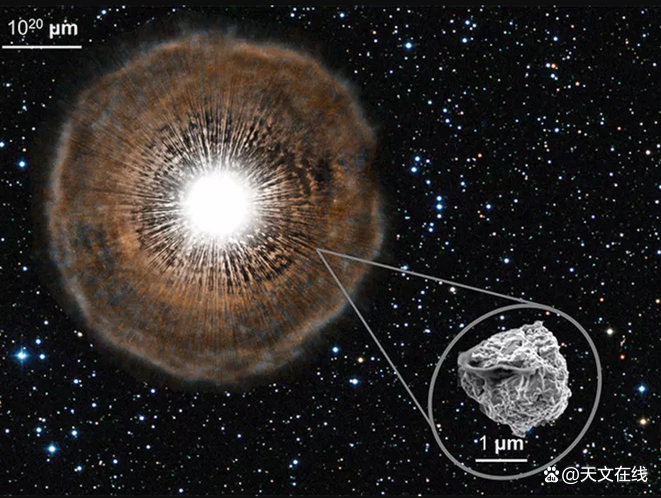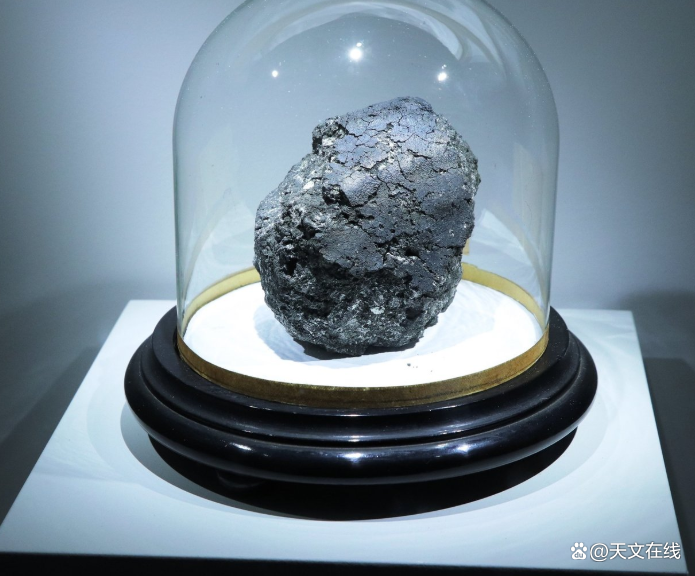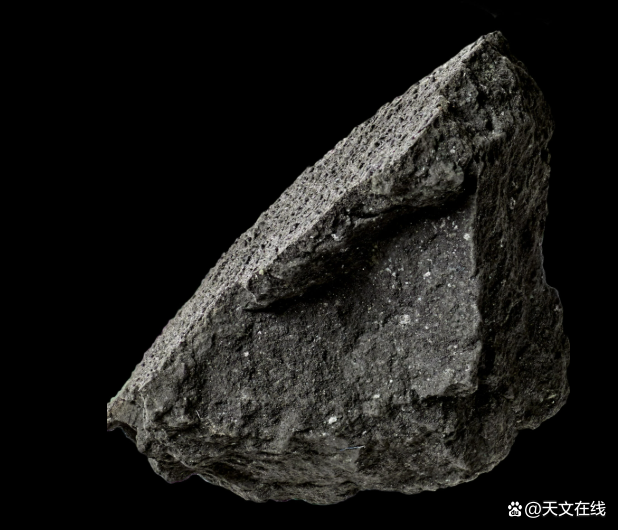Is it older than the solar system? Does Merchson meteorite come from carbon stars?
Author:Astronomy online Time:2022.07.25
Ancient meteorite retains the early solar system ingredients

Some meteorite contains more ancient particles than the solar system.
A microscopic photo from a micron -class carbonic silicon star dust particles from Merchson meteorite (source: NASA, Liu Nan and Andrew Davis)
Scientists are using a new analysis method to reveal the mysterious origin of ancient meteorite particles.
These older (former solar system) particles have constituted some ancient stars, and these stars died before the sun was born. Some similar stars still exist, and the analysis of the former solar granules provides useful references for star chemistry.
Scientists have tried to analyze the former solar system particles in meteorites before, but the physics research assistant professor of the University of Washington, Missouri is also a new research leader Liu Nan believes that the previous research methods are inaccurate.

Liu Nan and her team studied the sample of Merchson meteorite. This meteorite weighed 220 pounds and fell in a town in Mindson, Australia in 1969. Scientists who have studied meteorites once quickly realized that this fall was lucky, not only because the largest meteorite crushed block cut the local grain roof, but it did not hurt anyone.
Liu told us: "Mindson meteorites are very primitive. It was formed in the beginning of the solar system, and has not melted afterwards." Most of the meteorites from asteroids will experience collisions and heating, which will melt The meteorites disappeared at the beginning of the period.

In Merchson meteorites, the former solar particles were wrapped in younger material. Combined with previous research, scientists judge that it is older than the solar system based on these unique chemical composition.
Liu said: "These particles are composed of silicon carbide, which contain silicon atoms and carbon atoms, but silicon carbide will not be formed naturally in the solar system, because carbon atoms will prefer to combine carbon oxygen compounds with the solar system."
Liu said that these particles are most likely from carbon stars, and the carbon content in this bright red planet atmosphere is higher than the oxygen content. In order to confirm the hypothesis, scientists need to understand whether certain isotope compositions in meteorite particles are consistent with the carbon star. Homotin is a set of the same element containing different neutron numbers. Although some isotopes are common in the solar system, others will only appear in specific types of planets.

The spectrum photo of the silicon carbide particles on the ancient meteorite (source: Liu Nan)
Liu said: "The ratio of the isotope in these particles is very different from the solar system. For example, the carbon 12 and carbon 13 ratios of objects in the solar system are 89 %. Two to 200 % do not wait, this is caused by the melting response of its mother star.
The same is true of nitrogen, aluminum, and magnesium.
Astronomers are particularly concerned about whether the isotope composition of these particles is consistent with observation data on carbon stars. Before Liu's research, the matching of the two was not high. Liu believes that this may be because the carbon stars observed are not the birthplace of these particles. But she is also curious whether there is a simpler explanation.

Liu said: "In the past, the measurement results of these particles showed much less than this carbon and nitrogen content, but I think the problem may be on the measurement method. These particles have existed in the interstellar medium for hundreds of millions of years, and then in the solar system, and then in the solar system There are billions of years, so their surface may absorb the material. "
This means that in the past studies, scientists may study the impurities of the particle surface.
Liu and her team designed a new analysis method to remove substances attached to these particles. Part of this technology is: they first dissolved some Merchson meteorites in the acid to only silicon carbide particles, and then mix these particles with ions and oxygen ions to remove the late meteorite components.

After that, the team measured the isotopes of the particles. Liu said that the result was closer to the data observed from the carbon star, which confirmed her initial speculation. While showing that these particles come from carbon stars, the result can also help scientists to enhance their understanding of carbon star.
Mauricio Bouso, a co -author from the University of Peruja, Italy, said in a statement: "For a star physicist like a star physicist like me, the new in this study Homerin data is very exciting. "In fact, the proportion of abnormal nitrogen isotope in the former solar silicon carbide particles is very eye -catching in the past two decades. The new data explains the difference between the substances in the former solar star dust particles and the substances that are attached to the particles later, thereby solving a long -term doubt in this field.

For example, according to Liu, the new data provides clues for how carbon star creates aluminum elements in its core. However, these cognitions need to be confirmed in deeper studies.
By: Tereza Pultarova
FY: Theodore0332
If there is related content infringement, please contact the author to delete after the work is released
Reprinted, please obtain authorization, and pay attention to maintaining integrity and indicating the source
- END -
"Forbidden Disposal Poison" overturn the "hotbed" of the drug

On June 15th, the staff of the Dongchuan Town Comprehensive Management Center in X...
This "post -90s" have a responsibility
Liu Jiangshan is a post -90s professional and technical personnel at the Expressway Conservation Office of the Jiuquan Highway Business Development Center.Since participating in work, he has partici